A Guide for Beginners by Philip Greenspun; revised August 2018
Site Home : Photography : What Camera
This an attempt to fit the camera recommendation to the person and task. Cameras are tools and the project determines which tool is appropriate.
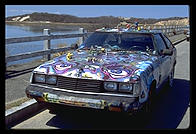
A camera for a child aged 4 to 10 should be
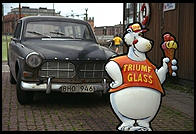
A single-use camera from Kodak or Fuji meets all of these criteria except that per-exposure cost will be high due to processing fees. How can these cameras, referred to in less politically-correct times as "disposable", deliver good image quality? They use molded aspherical lenses, shapes that would be very expensive to realize in a traditional glass lens. These radical shapes enable a very simple lens to deliver sharp photos and don't add anything to the cost of the camera since it is all molded out of plastic anyway.
If you think the kid is ready for a "real camera", a simple point and shoot is probably a reasonable purchase. Olympus, Panasonic, Fuji, and Nikon all make reasonably inexpensive shockproof and waterproof point-and-shoot digital cameras. Image quality is similar to what is delivered by the best smartphones.
Why not just hand the child a smartphone with a camera? The range of apps available on the phone may district from the photographic mission.
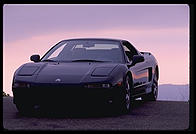
Most photography instruction these days is done with a digital single-lens reflex (SLR) camera, the same type of camera that you would typically find draped around a photojournalist's neck.
As of 2018, the most reasonable entry-level choice is probably the Nikon D3400, which has a high-dynamic range sensor.
More: Building a Digital SLR System.
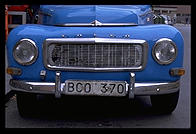
A lot of people get serious about photography when their first baby arrives. The new parent faces the following challenges:
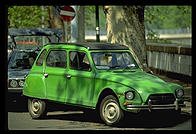
These challenges should be tackled with the following tools:
To ensure that you are getting a high-speed lens, you have to look at the aperture specification. A lower number is better and the difference between small numbers is significant. For example, a typical point and shoot will have an aperture of f/11 at the longest zoom length. A typical normal lens for a single-lens reflex camera will have an aperture of f/1.4. The f/1.4 lens is capable of taking a picture in light that is 1/64th as bright as the f/11 lens.
To get artistically compelling photographs of your baby, you'll want the following items: (a) Digital SLR or mirrorless with normal and portrait lenses, (b) a backup/purse/pocket camera that you can have with you at all times.
Choices for the main camera:
The typical kit lens has an aperture of f/4-5.6. This means it is f/4 at the wide end but only f/5.6 at the telephoto end. With a lens like this, you will be saddled with the task of choosing a focal length every time you want to take a picture. You will also be forced to find light that is between 8 and 16 times brighter than you'd need with a 50/1.4 "prime" lens.
As far as having a backup camera goes, you want a compact point and shoot camera. The only special requirement is that you probably want one that need not be used with flash all the time. There are three ways that a camera can capture a good photo without using flash:
More: Once you've burdened yourself with a fancy camera body, you might eventually want to consider adding more lenses, so read Building a Digital SLR System. To make the best use of that smartphone or point and shoot camera, read Good Photography with a Point & Shoot Camera.
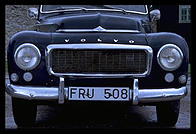
If you're going on a fabulous long trip to somewhere interesting, you have to first decide to what extent you'll be concentrating on photography.
If photography is a minor goal of the trip, take a camera that is easy to carry. Concentrate on the Compact category; the Ultra Compact cameras don't make sense for the trip of a lifetime and won't deliver better results than a smartphone. A lens that zooms out at least as wide as a 28mm perspective is essential, a feature found on the Sony RX100 (24mm at the widest). Keep in mind that these cameras aren't rugged or reliable. Be prepared to buy a new one halfway through your trip.
If you're going to spend an hour or more per day trying to achieve some artistic objectives or seriously documenting your journey, you can probably justify taking a physically larger camera.
Whatever you buy, make sure that you test it before you leave! Fill up each memory card that you're planning to use and make sure that you can read all of the images on a computer.
More: Choosing a Camera for a Long Trip
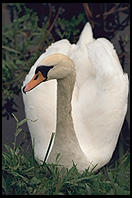
My 1998 advice: A lot of experienced photographers with old manual 35mm camera systems look longingly at the advanced new cameras advertised heavily by Canon and Nikon. You probably won't get substantially better photos with an automatic camera. However, some of the new features can increase your yield of usable photos. For example, autofocus is a God-send to those with poor eyesight or if you want to take pictures of your kids playing soccer. Automatic detection of film speed and autoexposure are good if you're in a hurry and apt to be sloppy. The latest professional-grade zoom lenses offer near-prime image quality and aperture with zoom convenience.
Suggested Outfits for 2018:
More: Building a Digital SLR System.
If you want to take a camera underwater read this underwater photography primer.
If you want to take a picture of something comparable in size to a 35mm negative (i.e., about one inch square), read this macro photography primer.
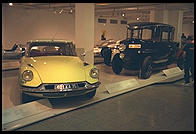
The most effective picture-taking machines these days are graceless bulky black professional cameras. The cameras in this category aren't the best value measured in strictly photographic terms. Nor will they take a better picture than a modern plastic single-lens reflex. But they can be appreciated as objects.
Suggested Models:
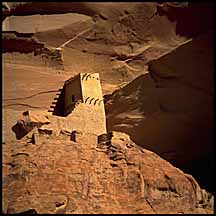
My 1998 Advice: If you want to achieve better results than what you see in National Geographic, you'll have to get up early to catch the best photographic light. After that, you can trivially crush them in terms of image quality simply by getting a larger format camera. These expose negatives that are 3 to 16 times the size of a 35mm negative and therefore you don't have to enlarge as much for a fixed print size.
More: Choosing a Medium Format Camera and Choosing a Large Format Camera.
2018: The National Geographic folks have switched to full-frame digital cameras, such as the Sony A7 and Nikon D850. It is possible to use these cameras to get higher-resolution landscapes via stitching of multiple images. There are, however, still medium format and large format options. These use bigger lenses to cast bigger image circles onto bigger sensors. The Leica S System and Hasselblad H6D are examples. Fuji and Hasselblad also make mirrorless medium format cameras. See mamiyaleaf.com for a variety of medium format digital backs and camera systems. Currently it is pushing the edge of technological possibility to make a 4x5" sensor that would be a natural fit for the back of a view camera. The folks at LargeSense seem to be trying.